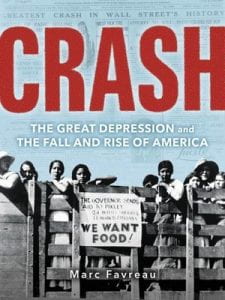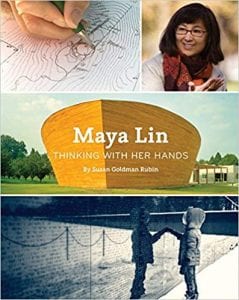Informational (Non-Fiction)

monika1607 / Pixabay
[wmd-divider style=”plant” spacing=”40″ color=”#002426″ size=”2″ ls-id=”5c64c1ee9b873″/]

CRASH The Great Depression and the Fall and Rise of America by Marc Favereau
What do you think you know about the Great Depression and how our country got out of it? Think again, the answer may well surprise you! Although this was his first book for young readers, Marc Favereau did an outstanding job of writing at a level that both children and adults can easily understand; explaining words and terms that a reader may be unfamiliar with. The book combines stark photographs of real people who lived during the Great Depression along with personal details of their stories to give the reader an insight into the minds and hearts of a people who lived through an incredibly difficult, dark and tragic time in the United States. The comprehensive listing of primary document sources, photographs, author notes and bibliography make this book an excellent source for both people doing research and people who simply love history.
[wmd-divider style=”birds” spacing=”40″ color=”#002426″ size=”3″ ls-id=”5cba387c05e37″/]
This book was absolutely outstanding! I learned so much more about the Great Depression, racism during that time and out beloved Eleanor Roosevelt than I did in all of my previous history classes! The pictures were amazing and the combination of realism with facts that were heretofore hazy in my memory came together to ensure that I was totally riveted by the book and didn’t want it to end. I’m happy that he has written other books like this, A People’s History of World War II, Remembering Slavery, and most recently, Spies, ensures that I will have plenty of reading material for those summer beach days.
[wmd-divider style=”leafs” spacing=”40″ color=”#002426″ size=”2″ ls-id=”5cc84a643bf67″/]

Who designed the Vietnam Memorial in Washington, D.C. ? If you conducted a poll, most people wouldn’t know. It was designed by a shy, quiet college student as part of a design competition she entered for a senior project. Maya Lin was studying funeral architecture at Yale and was completely shocked when members of the Vietnam Veterans Memorial Fund came to speak to her and tell her she had won! Maya Lin’s design was not without controversy and she had to fight for what she believed in both in the press as well as in subcommittee hearings in Washington, D.C. After this, Maya Lin had to be persuaded to work on other memorials, as she didn’t want to be known as just a “monument designer”.
[wmd-divider style=”plant” spacing=”40″ color=”#002426″ size=”2″ ls-id=”5cc84a7b3b920″/]
Maya Lin’s visionary designs encompassed art, science and math in a way that spoke to her soul. This is a beautiful book that is not only informative; but challenges the status quo as to what it is we think of when interpreting monuments and memorials. The visitor’s interaction with the monuments and memorials is of utmost concern to Maya Lin when she is immersed in the task of pushing our boundaries and making visitor’s eyes see beyond what is directly in front of them.
[wmd-divider style=”leafs” spacing=”40″ color=”#002426″ size=”2″ ls-id=”5cc84a8dae360″/]

Undefeated by Steve Sheinkin
This is an incredible novel of not just strength, grit, determination but also, heartbreak and racism. In the early days of football, the sport was even more violent than it is today. It was a mixture of rugby and boxing, with numerous injuries and many players getting killed. Undefeated, is a novel that depicts this tumultuous time during the early 1900’s and and how football became the sport we know and watch today. It centers around the Carlise Indian Industrial School and how it and many others like it, were built to “kill the Indian, and save the man”. These schools were designed to eradicate everything the Native Americans knew about their heritage and birthright by making the children who were sent there better able to be fit into society. The central characters are Jim Thorpe, a Native American, and “Pop” Warner, the football coach who helped to revolutionize the game.
The story of how the United States of America set out to systematically destroy Native American heritage is not for the faint of heart.